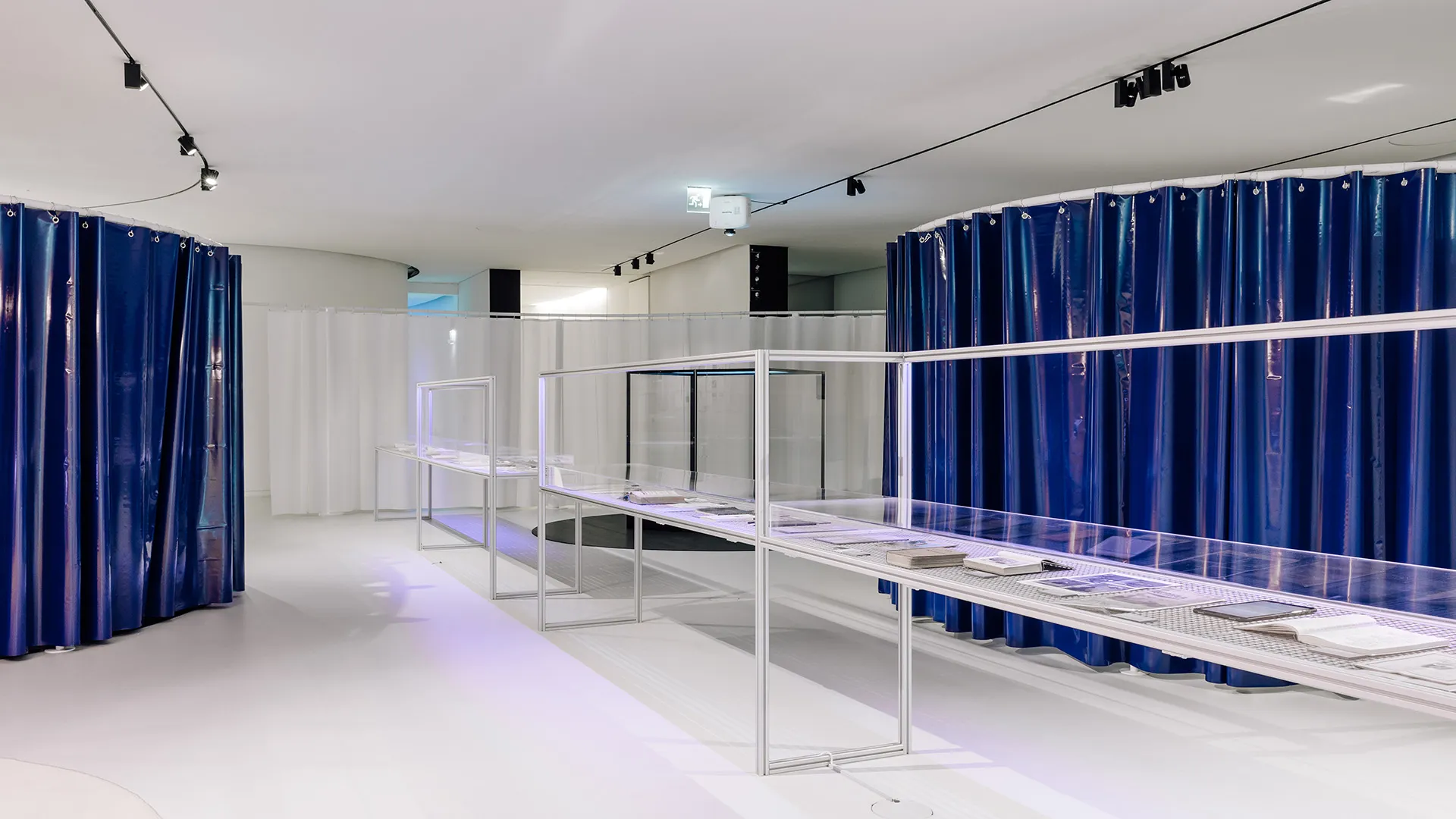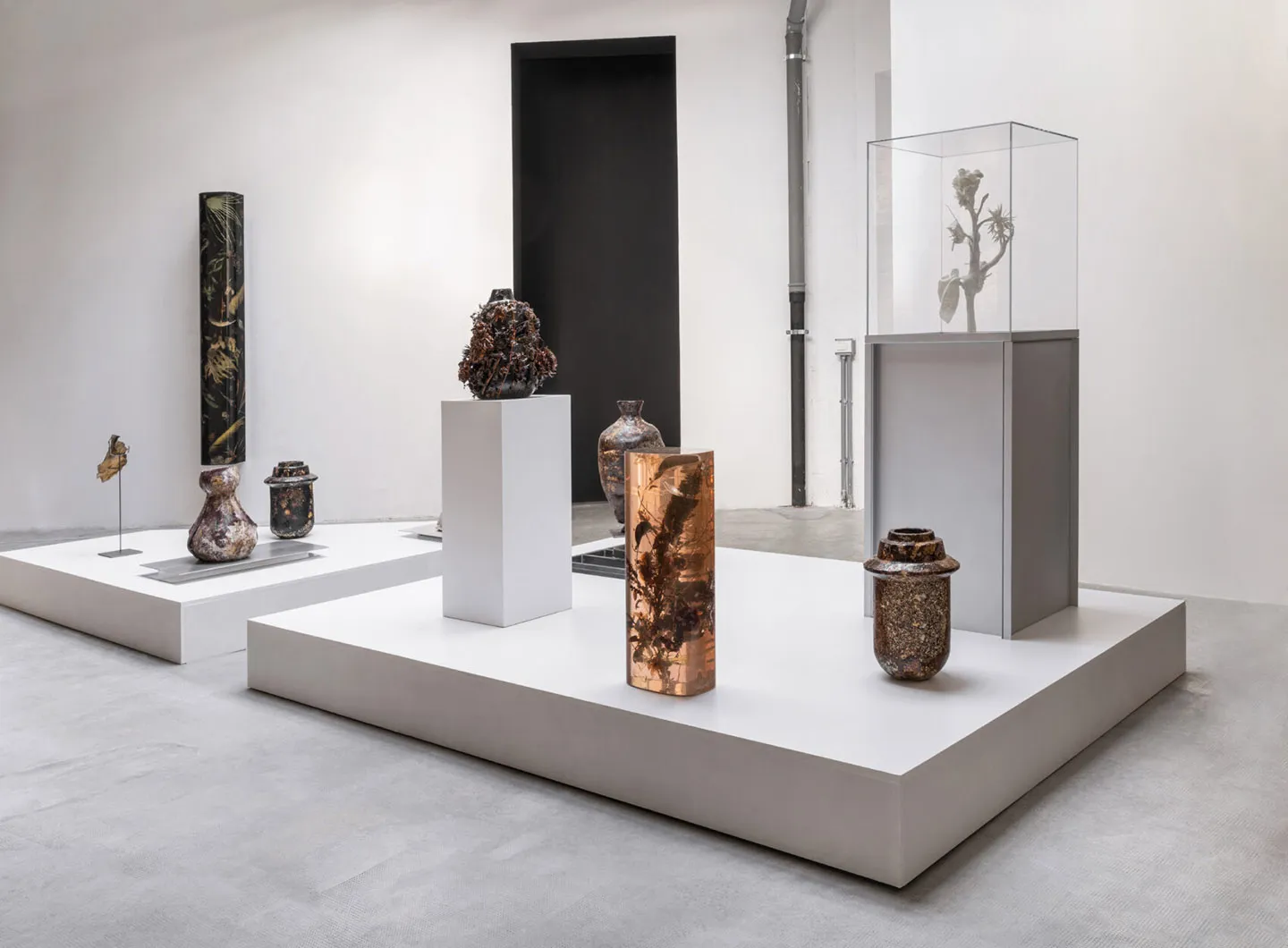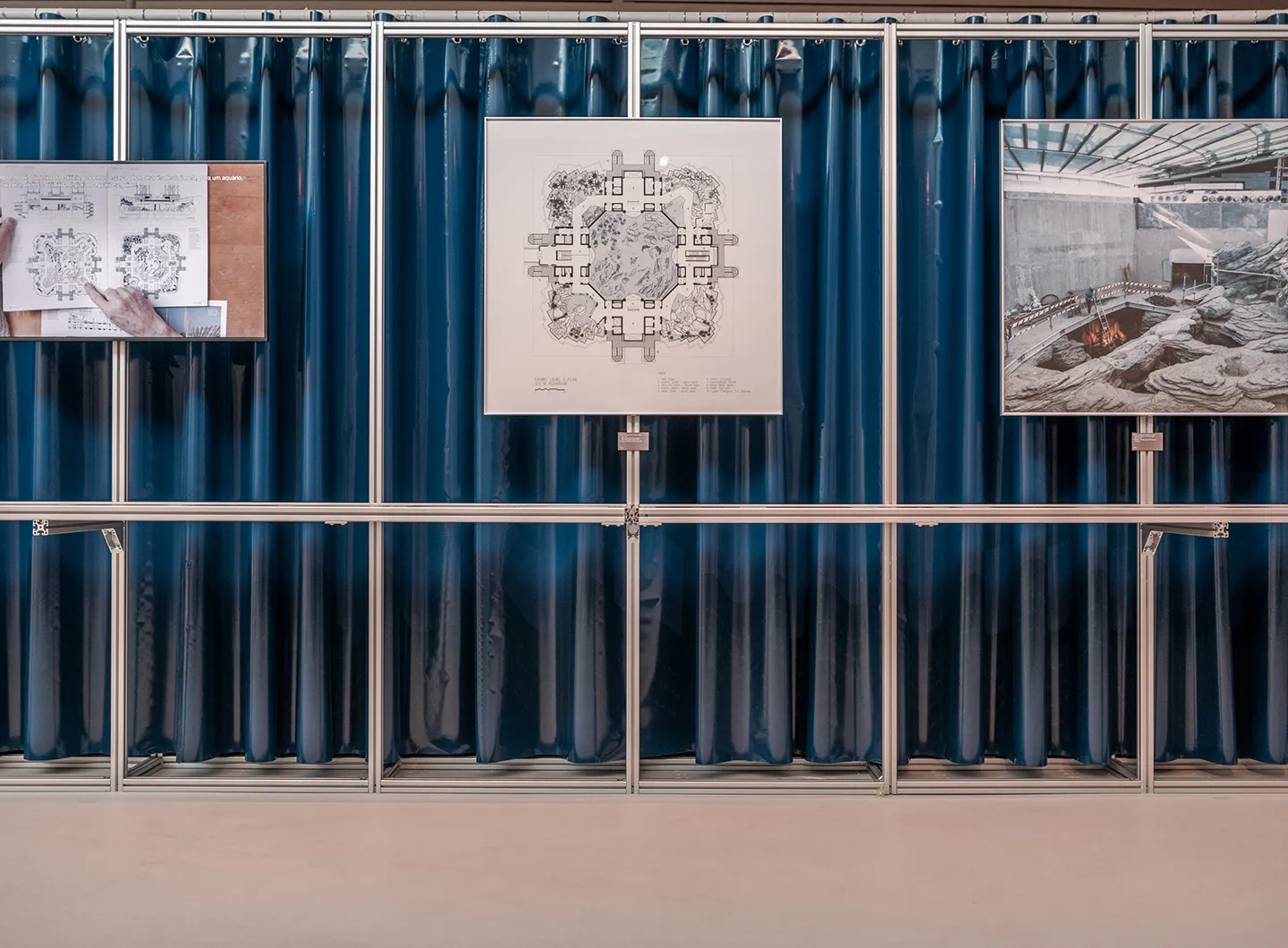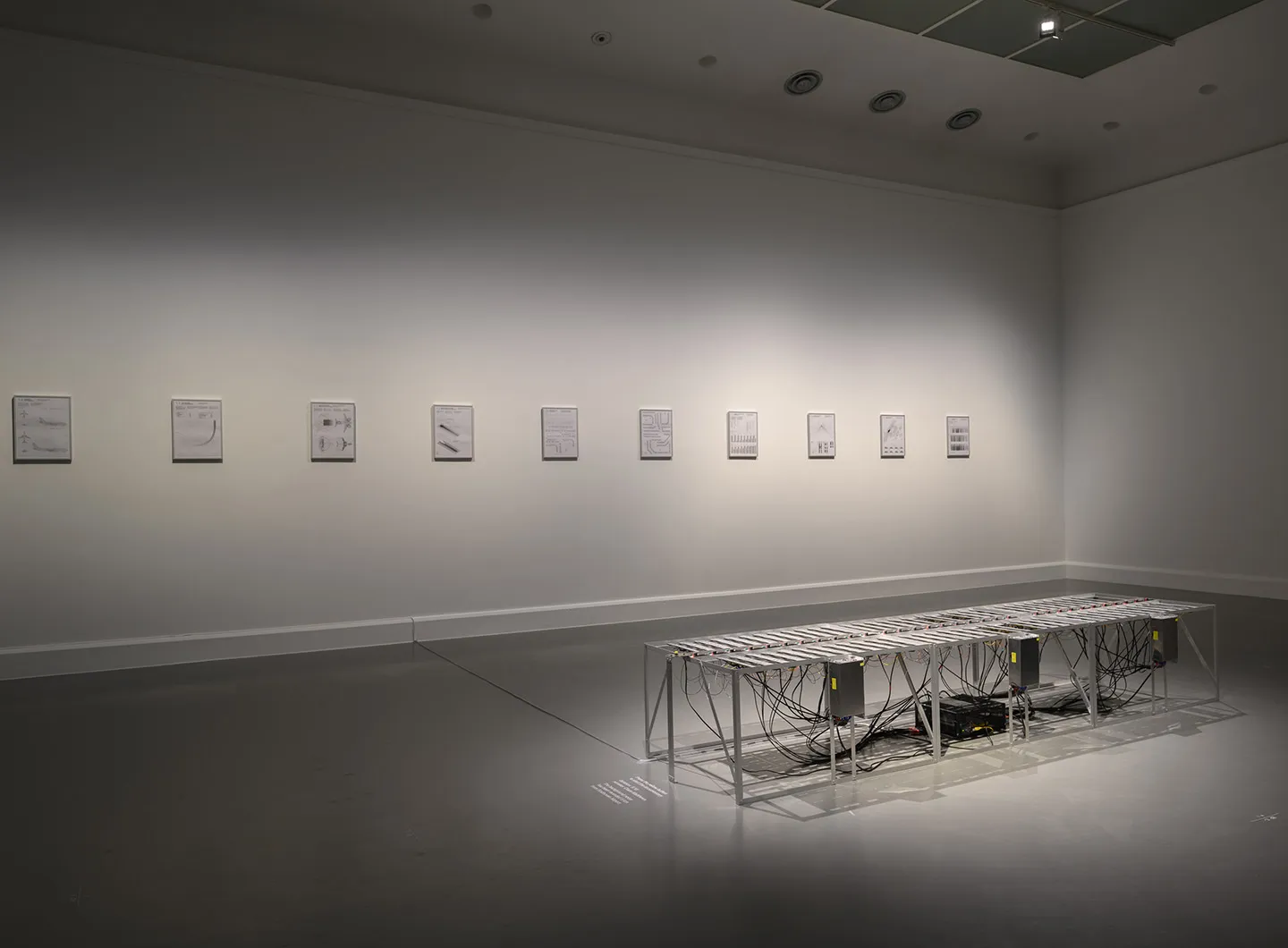In partnership with MiCodmc, a selection of establishments ripe for discovery during the 63rd edition of the Salone del Mobile.Milano, from 8th to 13th April
What does being a curator in the design world mean?

Aquaria – Or the Illusion of a Boxed Sea, exhibition curated by Angela Rui. View of the installation at MAAT, Lisbon, 2021
Martina Muzi, Angela Rui and Federica Sala discuss the changes in curation in the design world from their own, different perspectives
Being a curator is a frequently misunderstood job, because it is multifaceted and adaptive. It’s also a job that’s evolving fast because its very meaning is changing fast. Curating a design exhibition doesn’t just mean showcasing finished products, it also means telling a story, tackling an issue and its needs, exploring our material culture. To that end, we asked three Italian curators – Martina Muzi, Angela Rui and Federica Sala – to tell us about their work, outline their approach, and discuss one of their recent projects.
Federica Sala
The role of a curator is rather like that of a conductor or filmmaker. There are so many potential types of exhibition - historical exhibitions, exhibitions on research (in Italy we need to try harder), commercial and experimental exhibitions, to lay bare the political aspects of design. Plus, thousands of different exhibitions can be worked around one single subject or theme, it depends on which aspect you think it important to highlight.
The role of an independent curator is different to that of an institutional curator – you need to be able to change register and not be identified by one single thing. When I take on a project, I like to evaluate the honesty and the quality of a work, the sincerity and the passions of a designer. One of the aspects I like best is having to discover and learn things I don’t know, study themes that I wouldn’t necessarily otherwise or don’t coincide with my personal point of view. Then there’s the matter of listening: you have to gain a deep understanding and never allow your own personality to prevail over theirs.
One of the fundamental bonuses of my work as a curator is the personal relationship you strike up with the authors. For example, I’m really pleased with my latest work with the Polish designer Marcin Rusak. The exhibition Unnatural Practice, held during Milan Design Week 2021, goes back a long way. The idea of working together first cropped up in 2016. I’d seen one of his exhibitions in Basel in 2016, we emailed each other, we got to know each other better, but couldn’t find a way of collaborating. The exhibition in September was a wonderful experience for all those who worked on it, and it was important for me from a professional point of view, and I think the same goes for him.
Angela Rui
For me, curating design doesn’t just mean exhibiting products, but also understanding how the material culture and the objects around us alter the way in which we look at the world. If I had to say what characterises my work, it’s perhaps the idea of creating parallaxes, i.e. changing the way we look at things, observing a phenomenon by taking a lateral view. I don’t think there are any set rules in my job. I always like to say the same thing: we start with the concept, with the subject or the issues that have to be tackled, but there’s also the context, which can be a bit of a game changer, requiring a situated dialogue, before you get round to the final content, which brings the plurality of voices together in order to orchestrate the diffusion of a particular idea.
I love studying, for me it’s also a private obsession. I can’t imagine coming up with a rapid concept, making a call, bringing all the bits together and then immediately going into production. I need to talk to the authors, I need to know the subjects we’re covering in detail, I may need to shift the approach of the designers or artists invited to take part slightly and bring the whole thing together in a vision that highlights an angle that might not have been so striking before.
My latest exhibition, at MAAT in Lisbon, is called Aquaria – Or the Illusion of a Boxed Sea. I chose aquariums because, after doing some wide-ranging research, which included delving into history, I thought it would be interesting to explore the culture of the “tame sea” and how it’s made its way into our houses, both domestic and cultural, and therefore into the collective imagination. It all started during the Victorian era with the so-called “Aquarium Craze”. Aquariums were seen as objects of entertainment and introduced movement into houses for the first time: Nature becomes Culture. To put it simply, the domestic aquarium represents the first television and the public aquarium the cinema.
Martina Muzi
I see exhibitions as experimental projects, partly because of my training, which was pretty much as a classical designer. There are a number of aspects to curate: the space, the content, the graphic design, video and sounds, and the set-up are all things that come together to produce meaning. One of the fundamental aims of an exhibition is to build a space of possibilities for the designers and artists: a place where they can carry out research and then present it to the public. I like talking about the politics of curation, because curators are tasked with creating an environment in which ideas take shape and are shared. It’s important to respect and valorise the diversity of approaches and production times and translate it all into a single process. The narrative of an exhibition is perhaps not the most important thing but comes later. It can be a bit of a challenge, a risk, but decidedly more interesting. I’m not interested in finding a solution but in creating compositions of ideas that can co-exist despite being different, both in terms of media and in terms of meaning.
I’m working on a series of exhibitions with the Design Academy Eindhoven alumni network. The latest is called Geo-Design: Budget Airlines, which aims to explore low-cost tourism, which is a cultural phenomenon, and an economic and operational model that’s been imposed over the last few years. The approach to the exhibition project is very open and, like journalism, filmmaking, anthropology, writing fiction etc. it can all be brought together to produce an exhibition. We investigated lots of different aspects of this subject, such as marketing, environmental and noise pollution, cultural appropriation, contractual, logistical and infrastructural issues, which aren’t in themselves central themes but help to build a bigger, more complex picture. They are subjects that help the discipline of design survive.

In memoriam: David Lynch
The American director has left us at the age of 78. The Salone del Mobile.Milano had the honor of working with him during its 62nd edition, hosting his immersive installation titled “A Thinking Room”. An extraordinary journey into the depths of the mind and feelings. His vision will continue to be a source of inspiration.



 Stories
Stories
























